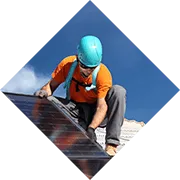Understanding the Costs Involved in Solar Panel Installation for Your Home
Understanding Solar Panel Installation Costs
With the rising concern over climate change and the need for sustainable energy solutions, solar panels have become an increasingly popular option for homeowners and businesses looking to harness renewable energy. However, one of the key factors that potential solar panel users consider is the cost of installation. Understanding the different elements that contribute to solar panel installation costs can help individuals make informed decisions.
Initial Costs
The initial cost of solar panel installation can vary significantly depending on several factors, including system size, equipment quality, and geographic location. On average, the cost of a residential solar panel installation ranges from $15,000 to $25,000 before any tax credits or incentives. This price typically includes the panels themselves, inverters, mounting hardware, and installation labor. Larger systems or higher-quality products will generally lead to higher installation costs.
Equipment Costs
Solar panel systems consist of various components, each contributing to the overall cost. The solar panels themselves are often the most significant expense. Prices can range from $0.60 to $1.00 per watt, depending on the brand and technology used. In addition to solar panels, inverters are necessary to convert the direct current (DC) generated by the panels into usable alternating current (AC). High-quality inverters can add several thousand dollars to the total installation cost.
Installation Labor
Labor costs can also impact the total installation price significantly. The complexity of the installation, the experience of the installers, and regional labor rates all play a role in determining how much you will pay for labor. On average, labor can account for 10% to 20% of the total cost. In some areas, labor rates are higher due to strong demand for solar installations or a shortage of qualified technicians.
solar panel installation cost

Incentives and Rebates
Fortunately, various federal and state incentives can help offset the cost of solar panel installation. In the United States, the federal solar tax credit (ITC) allows homeowners to deduct a significant percentage of their installation costs from their federal taxes. As of 2023, this credit stands at 30% and can create substantial savings for new solar customers.
Additionally, many states and local governments offer rebates, grants, or performance-based incentives that further lower the installation costs. Programs may vary widely by location, so it’s essential to research options specific to your region.
Long-Term Savings
While the upfront costs of solar panel installation can be considerable, it’s important to consider the long-term savings associated with solar energy. By producing your electricity, you can reduce or even eliminate your monthly utility bills, which, over time, can lead to significant savings. Moreover, solar panels can increase property value, making your home more attractive to potential buyers.
Conclusion
In conclusion, while the initial cost of solar panel installation may seem high, numerous factors contribute to this expense, including equipment quality, installation labor, and regional prices. With the aid of incentives and rebates, many homeowners can significantly reduce their upfront investment. Ultimately, the potential long-term savings and environmental benefits make solar energy an attractive option. Whether you are considering solar panels for your home or business, thorough research and understanding of installation costs can pave the way for a more sustainable future.
-
Unlocking Energy Freedom with the Off Grid Solar InverterNewsJun.06,2025
-
Unlock More Solar Power with a High-Efficiency Bifacial Solar PanelNewsJun.06,2025
-
Power Your Future with High-Efficiency Monocrystalline Solar PanelsNewsJun.06,2025
-
Next-Gen Solar Power Starts with Micro Solar InvertersNewsJun.06,2025
-
Harnessing Peak Efficiency with the On Grid Solar InverterNewsJun.06,2025
-
Discover Unmatched Efficiency with the Latest String Solar InverterNewsJun.06,2025







